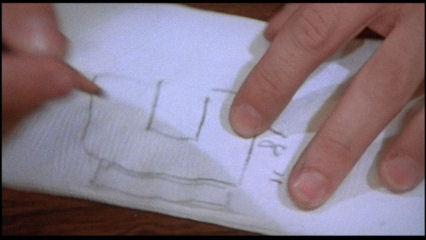The rise of agile development also brought a willing audience to user stories, leaving the granular product requirement specification behind. User stories are a great way to streamline product requirement definitions and a better way of expressing what a product will do. It gets across the product intent by illustrating how it will be used.
Product Requirement Risk
 I loved the goal of a well crafted product requirements document – remove ambiguity. Distill down to single line items that a review team can point to and determine “yes or no” if the product performs that function.
I loved the goal of a well crafted product requirements document – remove ambiguity. Distill down to single line items that a review team can point to and determine “yes or no” if the product performs that function.
That’s very useful in an industry where acceptance testing and sign off is required (I think fondly of my Emerson days and ISO 9000). One of the problems with waterfall methodology and the granular nature of the product requirements document is you can get what you ask for.
If you’re familiar with This is Spinal Tap, the delivery of the “on spec” recreation of Stonehenge highlights this issue. Nigel Tufnel got exactly what he specified, which was a little underwhelming than the monolith he envisioned. (Side note: Hat tip to IMDB who gave the movie a rating of 8 out of 11 – fans get the joke.)
Writing Good User Stories
 User stories are an essential part of the agile software development methodology.
User stories are an essential part of the agile software development methodology.
A well written user story will capture the “who,” “what,” and “why” of the requirement and yet remain simple enough to fit on a small note card or post-it note. The brevity forces economy of word. The 3Ws ensure focus on the essential information to state clearly to make the user story of value.
It’s the equivalent of journalism’s lead. The first paragraph of the story gives you everything you need to know to understand the story. The rest is just background and detail. You should be able to read the lead and understand the core of the story.
If Dogs Can Do It, So Can We
To me, it’s the intent of how the feature is to be used that creates the added value of the user story. Intent speaks to where the product needs to go and getting the team on board to deliver that is invaluable. Because what exactly the feature needs to be is never going to be perfect, but the direction the product needs to go can be set while still leaving room to steer.
Get it wrong, and you don’t see the direction of the product. Get it right, and everyone is on board with the vision – the direction the effort needs to lead.
It’s like understanding the meaning of a pointed finger. I’ve tried to get my dog to look at where I through a stick or a ball, and they look at my finger instead of where I’m pointing. I don’t want them to see where I am, I want them to see where things are going.
Interestingly, I may be in the minority with my dog experience. According to TIME, while humans and canines can follow the pointing of a finger naturally, no other known species in the animal kingdom can. Consider the mental work for a dog that goes into figuring out what a pointed finger means: paying close attention to a person, recognizing that a gesture reflects a thought and that another animal can even have a thought.
Understanding the intent of where the product needs to go is invaluable. If we don’t, we’ll deliver exactly what was asked for. And we just might find ourselves with an 18″ Stonehenge.

